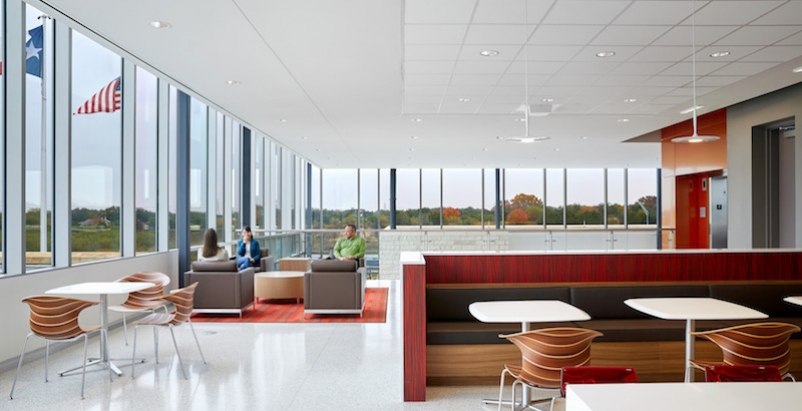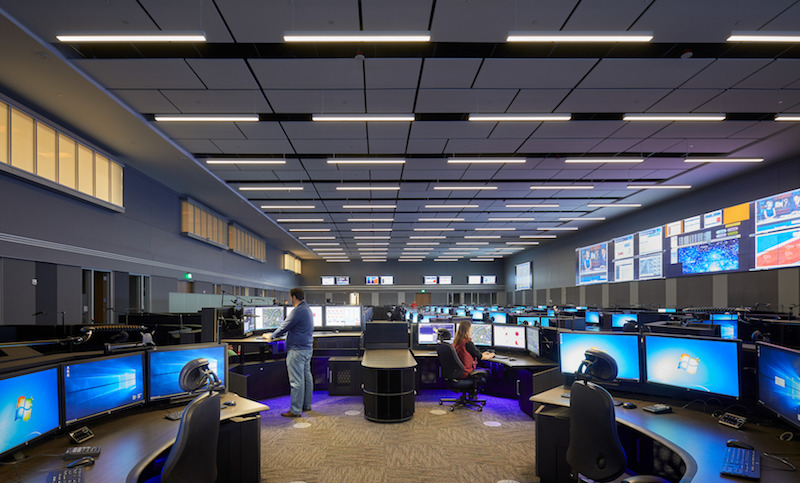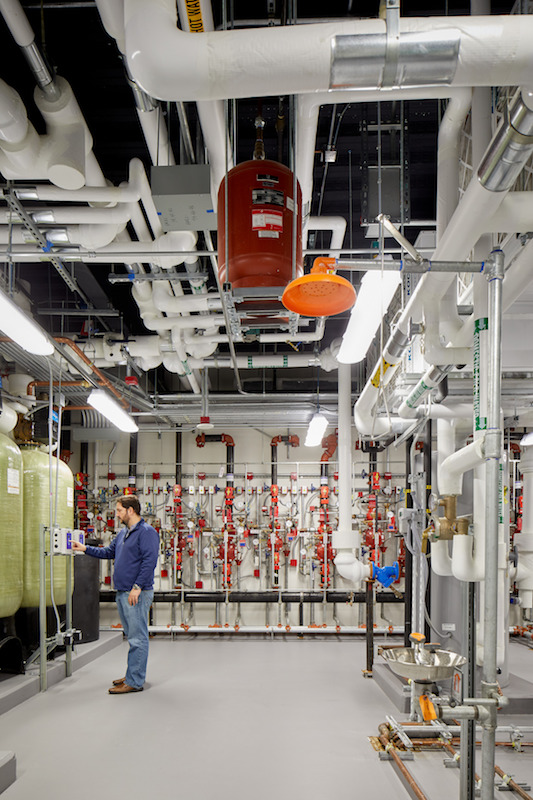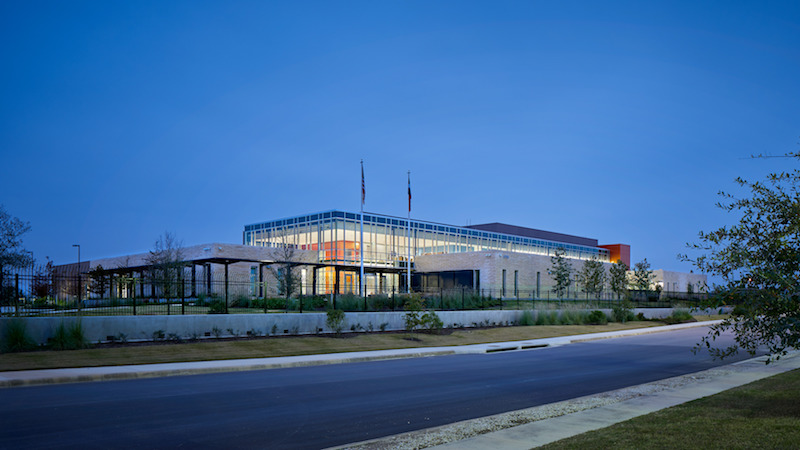
Operational wellness was an objective for a new 911 call center near San Antonio
The Operations Center consolidates activities that previously were being handled at 25 locations.

The Bexar Metro 911 Regional Operations Center in Texas includes areas where employees can get brief respites from their stressful jobs. The design and construction emphasize natural light and air quality. Image: Courtesy of Page
Earlier this week, the $40 million, 80,527-sf Bexar Metro Regional Operations Center, a 911 call center that serves 2.5 million residents living in three counties around San Antonio, Texas—Bexar, Guadalupe, and Comal— officially went fully functional.
Within its hardened shell are Mission Critical components that include its emergency and network operations, two data centers, a redundant engineering system, and a Public Safety Answering Point (PSAP) with a 13,878-sf operations floor and 104 consoles. The electrical system meets Tier IV data center standards for maintaining operations regardless of the occurrence of any unplanned activity, and the mechanical system meets Tier III standards.
The building, on a 9.4-acre lot, can withstand Enhanced Fujita 3 (EF3) Scale impact rating wind and ballistic events.
While the most important consideration for building this facility was opportunities for redundancy and uninterrupted power, what separates this Operations Center from many other secured 911 call centers is its non-hardened area around the building’s interior periphery that provides employees—whose long work shifts are broken up by 15-minute breaks—a place where they can decompress, relax, and interact.
That area is a combination of administrative offices, conference rooms, multipurpose training rooms, break rooms, sleep areas, a gym, and kitchen. The building’s north façade is marked by an entry courtyard, an interior courtyard and a third exterior courtyard. Occupant wellness is further enhanced by a design that maximizes access to daylight and high indoor air quality.
“Our design goal was to ‘blend’ the hardened and non-hardened areas seamlessly,” says J.J. Puga, AIA, designer and project manager for Page Southerland Page, which provided architecture, interiors, MEP engineering, fire protection, and project management services. He points out that the design and configuration of the Operations Center dictate that employees must leave their workstations in order to take advantage of the more open, commodious areas.

The 13,878-sf operations floor of the Bexar Metro 911 Regional Operations Center includes 104 consoles. Image: Courtesy Page
This building had been in the works for 15 years, but was waylaid until financial, logistical and territorial obstacles were cleared, explains Mike Pedigo, chief of staff for Bexar Metro 911 Network District, which owns the Operations Center.
Challenges included the initial resistance by the Edwards Aquifer Authority to allow the facility’s emergency generator fuel tanks to be installed on the site, for fear of spill containment and water contamination. Puga says Page ultimately demonstrated to the Authority’s satisfaction that the tanks would technically be above ground, and therefore legal within existing codes.
Construction of the Operations Center finally started in January 2015, and was funded through a surcharge fee to phone users within the jurisdiction.
The Building Team included Whiting-Turner (GC), Pape-Dawson Engineers (CE), Walter P. Moore (SE), Rialto Studios (landscape architect), TDSI (AV technology, data, security consultant), Wiss, Janney, Elstner Associates (roof consultant), and HeilExperts International (aeronautical consultant).

Mechanical and electrical redundancy are perhaps the most important reasons why this Operations Center was built. Two CPS Energy substations provide power to the site simultaneously. Image: Courtesy Page
The facility includes a helipad, at the insistence of Bill Buchholtz, Bexar Metro 911’s Executive Director. It also has 260 parking spaces and charging stations for electric cars and emergency vehicles.
The facility—also known as Quarry Run Operations Center—supports the Bexar County Sheriff’s office and the three counties’ fire and police departments, which provide the facility’s personnel. Prior to the opening of the Operations Center, 911 calls had been handled through 25 different locations within the jurisdiction of the Bexar Metro 911 Network District.
Pedigo says the 150-plus people who work in this building required “a lot of preparation” in terms of learning how to manage a facility of this magnitude. A new 911 system was installed, which also required training.
In early August, this facility is scheduled to become a backup 911 call center for the city of San Antonio, a switch that Pedigo anticipates could take as much as 18 months to fully integrate.

The Operations Center, which sits on a 9.4-acre lot, this summer will start serving as a backup for the city of San Antonio. Image: Courtesy of Page

